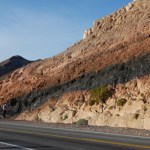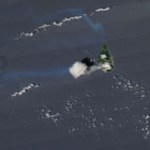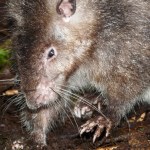papua new guinea
Lots of little pieces of news I've run across ... time to play a little catch up.
Stromboli: A volcano after Don Ho's heart.
Every once in a while, my RSS feeds will dredge up some articles from years gone by ... and this week there were two New York Times pieces that are a few years old, but interesting nevertheless. The first is about research conducted by Dr. Robert Sohn at WHOI on explosive undersea eruptions. The second is work by Corr and Vaughan about finding subglacial volcanism in Antarctica. Both are interesting reads if you missed them (like I did) the first time around.…
This week went fast, didn't it?
The Baekdu caldera along the North Korean/Chinese border.
The NASA Earth Observatory have been giving us a steady diet of volcanic plumes over the last week, including PNG's Ulawun, Russia's Sarychev Peak (a very faint plume), both an ASTER and Terra image of the summit region at Kliuchevskoi and finally a mix of plume and clouds over PNG's Manam volcano.
I wanted to also mention a brief article I ran into on the Changbaishan/Baekdu caldera along the Chinese and North Korean border. Although short on specifics, this article mentions a number of interesting (…
The level of news-frenzy on some of the recent volcanic eruptions has died down, but if you're looking to see information on the many rumbling going on worldwide, look no further. Here is this week's Volcanic Activity Report put together by Sally Kuhn Sennert of the Global Volcanism Program.
Highlights - not including Pacaya, Yasur, Tungurahua and our friend in Iceland - include:
The eruption in the Marianas apparently came from South Sarigan volcano - at least according to the best guess by folks who work in the Marianas. This submarine volcano apparently shows evidence of young lava flows…
I'm still playing catch-up after my week in the desert, so I've seen a lot of articles I've wanted to mention ... but a certain other volcano has taken up a lot of my time. However, I will attempt to make amends for that now.
By the way, would you believe Ubehebe Crater was closed? How do they close a volcano, anyway? However, I did get a great snap of a welded tuff on the road outside of Shoshone, CA.
A strongly welded tuff near Shoshone, CA. The dark interior is remelted volcanic ash/tephra surrounded by less welded pink tuff with abundant pumice clasts. Denison student David Sisak is on…
Here it is, my attempt to recap a year's worth of volcanic events. By no means is this supposed to capture every event, but rather the highlight/lowlights and what most captivated me during 2009. I'll be announcing the winner of the 2009 Pliny for Volcanic Event of the Year tomorrow.
Waimangu Geothermal Valley in New Zealand, taken in January 2009 by Erik Klemetti.
January
The year started out with a trip to New Zealand (well, for me at least) and vistas of the Waimangu Valley, formed in the 1886 eruption of Tarawera on the North Island. We were also still thinking about the late 2008…
Before it gets lost in the mists of time/finals, here is the weekly volcano report brought to us by the USGS and the Smithsonian Global Volcanism Program.
Highlights (not including Mayon, Soufriere Hills or Piton de La Fournaise):
Fuego in Guatemala produced ash plumes that reached 4.1-4.7 km / 13,500-15,400 ft along with avalanches of volcaniclastic debris.
Also in Guatemala, lava flows erupted from Pacaya, traveling hundreds of meters from the main vent area.
Manam in PNG produced an 3 km / 10,000 foot ash plume as part of its renewed activity this year.
The lava dome on Nevado del Huila…
A new Weekly Volcano Report from the Smithsonian GVP/USGS ... enjoy!
Highlights include:
There has been a number of reports of new activity at Llaima in Chile (hat tip to Eruptions reader Manuel Humeres for bringing them to us). Most of the current activity is steam-and-gas plumes along with long-period seismicity, suggesting we could be headed towards a new eruption.
Lava flows continue to erupt from Kliuchevskoi in Kamchatka, along with strombolian activity throwing ejecta up to 300 m / ~1000 feet above the crater.
Rabaul is busy shaking windows 20 km / 12 miles from the Tavurvur crater,…
Maybe I should just apologize right here and now for that title, but dang, I liked it.
Anyway, I've seen a lot of plume images cross my browser/inbox over the last day, so I thought I'd post a few of them.
Soufriere Hills, Montserrat
The renewed activity at Soufriere Hills has produced a bounty of plume images over the last week. The NASA Earth Observatory posted an image of the plume, which sometimes reached as high as 3.7 km / 12,000 feet (if not higher). Eruptions reader Alex Waning sent me some images of the top of the plume at ~3.7 km / 12,000 feet taken from a flight near Montserrat on…
We get a new update from the Smithsonian/USGS Global Volcanism Program ...
Highlights (not counting Soufriere Hills or Gaua) include:
The Weekly Report mentions the mystery eruption/noneruption of Karkar in PNG. Specifically, they report:
The report also stated that ash had merged with a thunderstorm cloud and had become unidentifiable.
Two ash plumes (11/25, 26) that reached at least 9.1 km / 30,000 feet were reported by the Darwin VAAC ... but as we know, it is far from clear that anything actually happened at Karkar last week.
Activity has quieted significantly at Chaiten in Chile, with…
Last week, I reported that Karkar in Papua New Guinea had erupted. This was based on reports from Volcano Live and from the Darwin VAAC that said the volcano had produced at least 1, maybe 2, ~13 km / 45,000 foot ash columns. That is not a trivial ash column - you would think a large eruption was needed to produce such an ash column (and you'd be right).
Then, no news. Nothing. I (and other Eruptions readers) scoured the web for more information on this phantom eruption at Karkar. Not a peep on noise about any eruption, let alone an eruption to send ash above 40,000 feet.
Recent reports from…
Karkar volcano as seen from space.
Eruptions reader The Bobs left a note mentioning that there may have been a 'significant' eruption at Karkar in Papua New Guinea. The only place I can find information is John Seach's Volcano Live:
An eruption occurred at Karkar volcano at 6:39 pm on 25th November 2009. The eruption plume reached a height of 45,000 ft. A magnitude 5.1 earthquake hit 90 km SSE of Karkar volcano 7.5 hours before the eruption.
I don't know too much about Karkar, but the GVP says that it is a volcanic island made of a pair of calderas, with the inner caldera formed in the last…
The latest news from the USGS/Smithsonian Global Volcanism Program Weekly Volcano Report ...
Highlights (not including Mayon) include:
Strombolian eruptions and small pyroclastic falls at Arenal in Costa Rica.
3 km / 10 000 foot ash plume from Bagana on Bougainville Island in Papua New Guinea.
Rumbling noises, ~4.5 km / 14 000 foot ash plumes and incandescence were all reported coming from Fuego in Guatemala.
Steam-and-ash from Popocatepetl near Mexico City reached 7.4 km / 24 300 feet.
Satellite images of Shiveluch revealed a large thermal anomaly - the new lava dome - along with multiple…
The relationship between language families and historical population genetics has a long history. In the 19th and early 20th centuries anthropologists were wont to substitute and synthesize the connections discerned in linguistic relationships with those of presumed biological affinities. This resulted in great hilarity. Older works sometimes labeled the Finns a "Mongoloid" people because of their Uralic language. But once the physical substrate of genetic inheritance (DNA) was ascertained some correspondences did emerge.
The figure to the left is from an L. L. Cavalli-Sforza paper, Genes,…
Sometimes it is hard to keep up with the mountain of remote sensing (or not so remote) images that get released on the internet. Over the last few days, the NASA Earth Observatory has released a bunch of images/videos of current eruptions, so I thought I'd round them all up here for you to peruse.
Soufriere Hills releasing puffs of ash-and-steam on October 6, 2009. Image courtesy of the NASA Earth Observatory.
Four new images in the recent past:
A nice, clear picture of an ash-and-steam plume from Rabaul in PNG was captured by the Terra satellite's MODIS imager on September 30, 2009. The…
I missed the weekly report last week (sorry), but here is the new USGS/SI volcano activity report.
Highlights include:
Shiveluch in Kamchatka is still erupting away, producing ~7 km / 20,000 foot ash columns as the lava dome grows. There has also been pyroclastic flows spotted emanating from the new lava dome.
There was a report of a ~7.5 km / 25,000 foot ash-and-steam plume from El Reventador in Ecuador.
More small plumes and incandescent lava bombs were spotted at the Tavurvur Crater at Rabaul in Papau New Guinea
As you all probably know by now, we here at Zooillogix do not officially consider a species to exist until it is discovered by Western (or at least Western-trained) scientists. Here are some species that now, officially, exist for the first time.
The 3-foot long Bosavi woolly rat is "quite a handsome beast," Kristofer Helgen of the National Museum of Natural History, told National Geographic. It can be found around Mount Bosavi in Papua New Guinea.
The Kuranda tree frog speaks in a quick tap, leading researchers to name it the "fast talking frog." It lives in the tropical Queensland,…
To the updates!
Batu Tara volcano in Indonesia. The volcano is currently producing small ash plumes.
I was distracted enough by trying to figure out a way to teach about Miller Indices that I plum forgot to post this week's USGS/SI Weekly Volcanic Activity Report. It was a fairly quiet week so you didn't miss much. Enjoy it at your leisure.
Rabaul must be positioned on the globe in such a way that NASA's Aqua satellite always gets a good shot at it. The Earth Observatory posted a new image of the plume from Rabaul and it looks thicker and more ash-laden than the image posted a few weeks ago…
Even the SI/USGS Weekly Volcano Report seems a little light -- welcome to the dog days of summer!
Highlights from this week's report include:
"Thunderous sounds", incandescence and small plumes (hundreds of meters) with more frequent seismicity at Ibu in Indonesia.
A sharp increase in sulfur dioxide output was noted at Mayon in the Philippines on August 4 - from ~700-900 tonnes/day to almost 2,000 tonnes/day.
~3,000 meter/10,000 foot gas-and-ash plume from Bagana in Papua New Guinea - you can see it on this recent NASA Earth Observatory image.
Ash/gas plumes from Sakurajima in Japan rose to…
In case you don't frequent the NASA Earth Observatory, I thought I'd call your attention to some images they recently posted that are, again, excellent shots of volcanism captured from space.
The current plume from Tavurvur Crater at Rabaul was shot by the MODIS imager on Terra in early August. The plume is mostly made of volcanic gases and steam, but minor amounts of ash are also found - and remember, even small concentrations of ash in the air can be hazardous to aircraft.
Shiveluch has been having a busy summer, with moderate-to-large plinian eruptions produced by the emplacement (and…
Two papers submitted, one to go. Keeps you quite busy, let me tell you.
Lava flow from a 2006 eruption on Mayon in the Philippines.
A few bits of news today:
A few more details about the ongoing watch of Mayon in the Philippines . There have been apparently no changes in the shape of the floor of the crater as you might expect if magma was rising underneath. However, there has been an overall inflation of Mayon since the unrest began a few weeks ago. PHIVOLCS will be checking the sulfur dioxide and carbon dioxide output of the volcano soon as well.
Lots of articles this week about the "…


